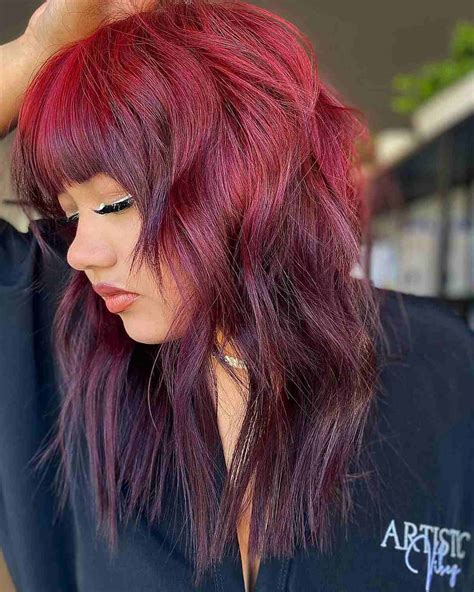Introduction
The ombre hair trend, characterized by a gradual transition from dark roots to lighter ends, has taken the hair world by storm. Now, its reverse counterpart, ombre hair reverse, is emerging as a chic and versatile alternative. This technique involves lightening the roots while keeping the ends darker, creating a captivating and sophisticated look.

Benefits of Ombre Hair Reverse
- Reduced Damage: Unlike traditional ombre, which requires bleaching the entire hair, ombre hair reverse minimizes damage to the hair shaft by focusing on lightening only the roots.
- Customizable: This technique allows for endless customization, with options ranging from subtle, barely-there transitions to bolder, more dramatic contrasts.
- Versatile: Ombre hair reverse suits all hair types and textures, from fine and straight to thick and curly.
- Low Maintenance: Compared to traditional ombre, ombre hair reverse requires less frequent touch-ups as the roots grow out more subtly.
How to Achieve Ombre Hair Reverse
Step 1: Section the Hair
Divide the hair into four sections: two in the front and two in the back.
Step 2: Apply Lightener
Using a balayage or foil technique, apply lightener to the roots, leaving about 2-3 inches of natural hair at the ends.
Step 3: Process and Rinse
Process the lightener according to the manufacturer’s instructions, then rinse thoroughly.
Step 4: Tone and Condition
To neutralize any unwanted yellow or orange tones, use a cool-toned toner. Follow with a deep conditioning treatment to restore moisture and shine.
Tips and Tricks for Flawless Results
- Start with a Natural Base: A darker natural hair color will create a more striking contrast with the lightened roots.
- Use a Professional: For optimal results, seek the expertise of a licensed cosmetologist who specializes in ombre techniques.
- Gradually Lighten: Lighten the roots in small increments, allowing the hair to rest between sessions to prevent damage.
- Maintain with Toner: Regularly use a toner to keep the roots ashy and prevent brassiness.
Pros and Cons
Pros:
- Reduced damage
- Customizable
- Versatile
- Low maintenance
Cons:
- Requires multiple sessions
- Can be time-consuming
- May not be suitable for all hair types (e.g., highly damaged hair)
Variations on Ombre Hair Reverse
- Subtle Reverse: A gradual transition from slightly darker roots to slightly lighter ends, creating a natural-looking sun-kissed effect.
- Dramatic Reverse: A bold contrast between dark roots and platinum blonde ends, resulting in a striking and edgy look.
- Reverse Balayage: A blend of balayage and ombre hair reverse techniques, resulting in subtle highlights that gradually transition to darker ends.
Ombre Hair Reverse for Different Hair Colors
- Blonde: A reverse ombre with light blonde roots and darker blonde ends creates a dimensional and sophisticated look.
- Brunette: A reverse ombre with dark brown roots and medium brown ends enhances the hair’s natural depth and richness.
- Red: A reverse ombre with fiery red roots and auburn ends adds warmth and vibrancy to the hair.
- Black: A reverse ombre with black roots and dark chocolate ends creates a sleek and polished appearance.
Tables for Reference
| Technique | Lightened Area | Result |
|---|---|---|
| Traditional Ombre | Hair ends | Gradual transition from dark roots to light ends |
| Ombre Hair Reverse | Hair roots | Gradual transition from light ends to dark roots |
| Reverse Balayage | Sections of hair | Subtle highlights that transition to darker ends |
| Foilyage | Strands of hair | Custom placement of highlights for a more defined gradient |
| Hair Type | Suitability | Considerations |
|---|---|---|
| Fine Hair | Suitable | May require more frequent touch-ups to maintain definition |
| Thick Hair | Suitable | Can handle bolder contrasts and less frequent touch-ups |
| Curly Hair | Suitable | May require special techniques for even lightening |
| Damaged Hair | Not Recommended | May exacerbate damage and compromise hair health |
| Maintenance | Frequency | Steps |
|---|---|---|
| Root Touch-ups | 6-8 weeks | Lighten roots as they grow out to maintain the gradual transition |
| Toning | As needed | Use a cool-toned toner to neutralize yellow or orange undertones |
| Deep Conditioning | Weekly | Nourish and restore hair moisture |
Effective Strategies for Flawless Ombre Hair Reverse
- Plan Ahead: Determine the desired level of contrast and consult with a professional to create a customized plan.
- Use High-Quality Products: Invest in professional-grade hair lighteners and toners to ensure optimal results.
- Protect Hair: Use a heat protectant spray and avoid over-styling to prevent damage.
- Regular Maintenance: Follow the recommended maintenance schedule to keep the ombre hair reverse looking fresh and vibrant.
Conclusion
Ombre hair reverse is a versatile and eye-catching hair technique that offers endless possibilities for customization. By following the guidelines outlined in this guide, you can achieve a flawless ombre hair reverse that enhances your natural beauty and adds a touch of sophistication to your style. Embrace the trend and step into the spotlight with your own unique and radiant ombre hair reverse.
